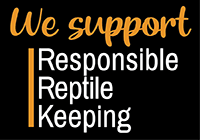Understanding Fungal Growth in Bioactive Terrariums and How to Address It

Written By:
Joshua Halter – The Bio Dude, Inc
Chase Jennings – Houston Frogs, LLC
One of the most rewarding aspects of keeping your bioactive terrarium is watching the perpetual change of your habitat in the form of different biological and fungal processes developing before your eyes. In your living habitat, you will notice different strains of fungus pop up occasionally. Many times, this is a sign of a healthy, biological system that is working cohesively together while forming symbiotic relationships with your plant roots and reinforcing the natural cycle of breaking down organic waste into organic nutrition that further reinforces your cycles in the bioactive terrarium.
Many commercial bioactive substrates on the market are fairly inert (in the form of nutrition), being that the ingredients need to pass many treatment parameters to import into the USA and to ensure no nematodes, pests, or other forms of bad strains of bacteria or fungus’ are present that could cause local ecological harm if put into the environment. So, many commercial blends (such as the Bio Dude) will recommend using a soil starter with your substrates such as the Bio Shot or a comparable product. In the bag with most commercial substrates different strains of mycorrhizae will already be present in your premixed substrate with fairly minimal levels as well as other strains of fungi may already be present.
Upon introducing and establishing your bioactive habitat you may notice different fungus show up in your habitat. From white, green, or yellow molds to small clumps of fuzz that envelop plant roots, all of these may be seen and may become established in your bioactive habitat. One of the big red flags is when you see black mold. If you see black mold, that means that there is not enough airflow in your substrate, too much moisture with bad bacteria present, or a lack of plant roots/soil aerators. Many times, keepers may fret that this is a negative occurrence, but this article to help ease your mind!
Here is a breakdown of some of the common strains of fungus that you may see established in your terrarium (Please note, many of these photos were provided to us by members of our community, not our customers. All were used with permission and do not reflect the products of the writer(s).

Trichoderma Mold during sporulation
Trichoderma is a genus of fungi that includes several species that are commonly found in soil and on plant surfaces. Some species of Trichoderma are known to be beneficial to plants, acting as plant growth promoters and protecting plants from other harmful fungi. Trichoderma can help plants by colonizing their roots, producing enzymes that help the plant absorb nutrients, and producing compounds that inhibit the growth of other fungi. Some species of Trichoderma are also used as biocontrol agents to control plant diseases caused by fungi.
Trichoderma fungi are generally considered to be non-toxic and non-pathogenic to animals and humans. In fact, some species of Trichoderma are used as probiotics for animals and are known to have beneficial effects on animal health. However, some people may have allergic reactions to Trichoderma, and in rare cases, it can cause infections in individuals with weakened immune systems.
It is also important to note that some species of Trichoderma may produce mycotoxins, which are toxic compounds produced by certain fungi. These mycotoxins can cause health problems in animals and humans if they are consumed in large quantities. However, this is not a common occurrence and there have been no reported cases of mycotoxin production from the Trichoderma species that are commonly used as plant growth promoters and biocontrol agents.
If you want to get rid of Trichoderma in a terrarium, there are several methods you can try:
- Sterilize the soil: Heat the soil to a high temperature (around 180°F) for a few hours to kill any Trichoderma spores that may be present.
- Remove and replace the soil or affected decor: Remove all the soil from the terrarium and replace it with new, sterilized soil.
- Use beneficial microorganisms: Introduce beneficial microorganisms such as Bacillus subtilis or Streptomyces spp. that can outcompete Trichoderma for resources.
- Dry the terrarium: Trichoderma prefers moist environments, so reducing the humidity in the terrarium can make it less favorable for the fungus to grow.
It is important to note that some of these methods may not be suitable for certain types of plants or animals that you may have in your terrarium. It is also important to follow the instructions on the product you use.
Keep in mind that preventing Trichoderma from growing in the first place is often the best approach. This can be done by keeping the terrarium clean, dry, and well-ventilated, and avoiding over-watering. Adding certain species of springtails will help significantly as they predate upon these fungi.

Stachybotrys Chartarum
Stachybotrys chartarum, also known as black mold, is a type of fungus that can grow on a variety of materials including cellulose-based materials such as drywall, insulation, and wood (such as vivarium décor). It typically grows in indoor environments that have high humidity levels and water damage.
Exposure to high levels of spores from Stachybotrys chartarum can cause a range of health problems, including respiratory problems, headaches, allergic reactions, and in severe cases, neurological problems. Long-term exposure to this mold can also lead to chronic health conditions such as asthma and chronic obstructive pulmonary disease (COPD). It is particularly dangerous to infants, the elderly, and people with compromised immune systems.
Removing Stachybotrys chartarum (also known as black mold) from a terrarium can be a difficult and potentially hazardous task. It is important to take the following steps to ensure that the mold is removed safely and effectively:
- Remove contaminated materials: Remove any contaminated materials, such as soil or wood, from the terrarium. It is safest to dispose of these materials due to the toxicity of the mold.
- Wear protective gear: When cleaning up mold, it is important to wear protective gear such as gloves, respirator mask, and goggles to protect yourself from inhaling mold spores.
- Clean the terrarium: Clean the terrarium using hydrogen peroxide (remove any animals before this process is started). Scrub the surfaces of the terrarium to remove any visible mold.
- Dry the terrarium: After cleaning, allow the terrarium to dry completely, storing your plants in a bin of moist sphagnum moss until the vivarium is ready. As an extra measure, the plants can be cleaned in a 10% bleach solution then 2-3 rinses in fresh water to kill and remove mold spores. Use a dehumidifier or fans to help speed up the drying process.
- Monitor the terrarium: Monitor the terrarium regularly to ensure that the mold does not return.
- Add springtails and beneficial inoculants of fungi and bacteria to consume and compete with any mold that begins to grow in the terrarium.
It is important to note that if the infestation is severe or if you are not comfortable or capable of handling mold removal by yourself, it is best to seek professional help.



Lycocoprinus Birnbaumii mycelium
The yellow flower pot fungus, also known as Leucocoprinus birnbaumii, is a small, saprobic mushroom that is commonly found growing in indoor and outdoor environments, often in flower pots or garden beds. This species of fungus is known for its bright yellow, fan-shaped cap and its delicate, thin stem. The cap is typically 2-5 cm in diameter, and the stem is usually 1-5 cm in length.
The yellow flower pot fungus is considered to be a saprobic fungus, which means it obtains its nutrients from dead or decaying organic matter. It is commonly found growing in soil, potting mixes, and other organic materials. It is also known to grow in mulch, compost, and other outdoor areas with high organic matter content.
The yellow flower pot fungus is not considered to be harmful to humans or most animals, but some people may be allergic to it. It is also not considered to be a desirable species for consumption, as it can have a bitter taste and is slightly toxic. Many species of isopods, such as cubaris, may try to consume this fungus(most Isopods will not touch it), which is toxic to them and can cause a colony crash.
Due to the highly aggressive nature of this fungi, the only way to completely eradicate it is by complete disposal of the soil, rinsing of the plants in a 10% solution of bleach followed by a double rinse in fresh water, scrubbing the tank and any contaminated décor with a 10% solution of bleach followed by a thorough rinse with fresh water along with baking any substrate, botanicals, or décor in the over at 300 degrees F for 30 minutes.
Most springtail species will not consume Leucocoprinus birnbaumii, allowing it to grow mostly unchecked. To bolster your soil against these fungi, add competing fungi and bacteria such as those found in inoculants made for vivariums and terrariums. You can also pull any excess you see. A small amount is just fine, but if it is in extreme excess you may want to consider the above options, if necessary.


Hypomyces Rosellus (Cobweb Mold)
White filamentous cobweb mold, also known as Hypomyces Rosellus, can be a common problem in terrariums. This type of mold is characterized by its white, cottony appearance and the way it forms webs or cobwebs in the areas where it grows. It typically thrives in damp, humid environments and can grow on a variety of surfaces such as soil, plants, and decorations.
In a terrarium, white filamentous cobweb mold can be caused by a number of factors such as high humidity levels, poor ventilation, over-watering of plants, or new wood decor. If left unchecked, it typically will go away with time as it consumes available nutrients on the surface of décor and substrate materials.
To prevent or control the growth of white filamentous cobweb mold in a terrarium, it is important to maintain proper humidity levels, ensure adequate ventilation, and avoid over-watering. It is also important to regularly clean the terrarium, removing any dead plant material or other debris if your isopods are not able to consume these materials before they begin to mold.
If the mold is already present, use a weak solution of hydrogen peroxide on the affected area. The solution can be made by mixing 3% hydrogen peroxide with water in a 1:1 ratio. Spray it over the mold and let it sit for 10-15 minutes. Then, wipe the area clean with a paper towel or cloth. Repeat this process if necessary.
Generally, a well-established colony of springtails and competing beneficial species of fungi and bacteria will keep cobweb mold in check. Cobweb mold is usually an issue with newer vivariums and terrariums, or in cases where new décor has been added. As the nutrients on the surface of the décor are consumed and as it is colonized by a variety of microorganisms, cobweb mold will no longer be an issue.
If you have any further questions or need help with an ID, just reach out to us at customercare@thebiodude.com or Houstonfrogs@yahoo.com
- Rebekah Walenta










